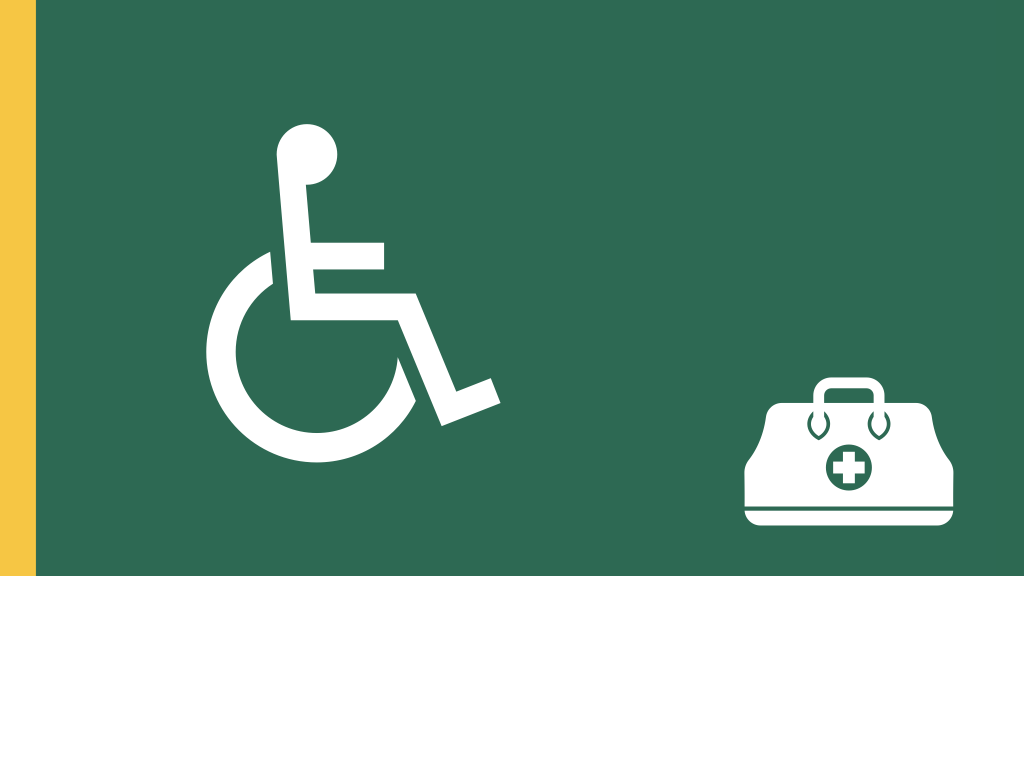Return to:
Toolkit for School NursesHello, and welcome to this presentation about addressing incontinence for children with special needs. My name is Kelly Savitri.
I think you will see that while there are some specific interventions for this population, much of the process is similar to what we do with typically developing children.
There are some complex medical conditions that may have a significant impact on a child’s ability to recognize the sensation for elimination, as well as the neurological ability to control voiding or defecation. Some examples include spina bifida or neural tube defects, rare genetic conditions, neurologic conditions, anatomical abnormalities, such as anal stenosis, or medications such as anticholinergics or diuretics. For these very complex cases, close collaboration with the child’s medical team is going to be necessary to identify reasonable continence goals for their individual situation.
But, we need to be aware that many medical conditions also come with an increased risk of constipation. These include ADHD, autism, Trisomy 21, also known as Down syndrome, hypothyroidism, acromegaly, which is caused by excessive growth hormone, hyperparathyroidism, diabetes, Hirschsprung’s disease, and cystic fibrosis.
Many times, when a child with special needs is struggling with toilet learning, the adults in that child’s life assume it has to do with their learning disability, but the reality is that these children get constipated too. In fact, they are even more likely to be constipated than their neurotypical peers. Before we make any assumptions about their capacity to learn toileting skills, we need to thoroughly investigate the possibility of constipation by taking bowel data and screening for symptoms on the bowel symptom checklist.
Children with ADHD are more likely to experience chronic constipation and encopresis. We don’t know exactly why that is, but it has been suggested that it could be due to alterations in the central or enteric nervous system that cause delayed gastrointestinal motility or an altered perception of intestinal distention. It also might be that they don’t respond as promptly to physical cues from their bowel and bladder, have difficulty interrupting current more desirable tasks, or are unable to focus on defecation urges long enough to carry out a normal bowel movement. Regardless of the cause, diagnosis and medical treatment are not significantly different from that of the neurotypical population.
Autism spectrum disorder encompasses a wide range of cognitive presentations, but there are some common considerations to keep in mind. Firstly, children with ASD tend to have rigid routines related to food and exhibit alterations in bowel motility that put them at higher risk for constipation. They may not be able to communicate that they are having abdominal pain or pain with bowel movements, and they will likely need more communication support when it comes to learning the steps associated with toileting. Also, many children with ASD have sensory differences. They may be bothered by cold toilet seats, echoey bathrooms, and loud toilets or hand-dryers. They may also have more difficulty with interoception, which is the ability to recognize the sensations inside the body, such as the signals for a full bladder or rectum.
Children with Trisomy 21 are more likely to experience constipation, incomplete voiding, voiding with a weak stream, and celiac disease, which can lead to additional GI symptoms. Trisomy 21 causes an overall decrease in muscle tone, known as central hypotonia, which can create difficulty maintaining and releasing tension in the pelvic floor and the puborectalis muscle. This is why it is especially important for these children to have proper positioning supports while toileting. Also, they may experience a decreased muscle stretch response, making it harder for them to receive and interpret the sensation of needing to pee or poop.
Regardless of the child’s physical or cognitive disability, we should proceed with the following steps: Number one is to assess for constipation symptoms, and number two is to treat any sign of constipation. Three, we can identify obstacles related to participation in toileting. And then four, collaborate with parents or guardians and school personnel to identify those inchstone goals and agree on consistent language and routines across settings. And lastly, five, we want to plan for regular team check-ins.
Remember, there are two key aspects of toilet learning, to recognize the sensation for elimination, and then to learn the chain of behaviors associated with toileting. Children with special needs may need extra help with both of these factors. While some children may never achieve full independent continence, the vast majority of children with special needs are able to achieve these two components with the right amount of teaching and support. In the “Accommodations and Support” video, I introduced the idea of inchstones, the many little steps that make up any kind of learning milestone.
For children with disabilities, you may have to identify even smaller increments and implement them more slowly and patiently. Graduated guidance refers to the level of prompting that you give a child. For example, you might start by pointing to a visual prompt, speaking a verbal prompt, and assisting the child to adjust their clothing and sit on the toilet. Over time, you can take away one prompt at time. Visual communication supports like task strips and first-then routines are helpful to teach the complex chain of behaviors associated with toileting. These are just generic examples. You would want to customize the images to break the process down into as many small steps as necessary for that individual child. Some of these things are easily accomplished by the teaching staff, but if you have access to an occupational therapist, we recommend enlisting them as part of your team to help develop these supports.
Children with gross or fine motor differences may need adaptive equipment to be properly positioned on a potty or toilet seat. As the health care professional in the school setting, you can be an advocate for ensuring that the child has access to this accommodation. Work with the child’s OT or PT to determine what equipment will best meet the child’s needs. A student can’t learn how to use the toilet until they have access, so the right equipment is essential.
The most important things that a child with special needs requires is patience and consistency. Changes must happen incrementally and slowly, with lots of encouragement and celebration of small victories. Research shows that most people learn best through activities that happen within their daily routines, and this includes children with disabilities. Try to move all hygiene behaviors as close to the bathroom as possible. Schedule regular toileting times. Even if the child is currently unable or unwilling to sit on the toilet, try scheduling diaper changes at predictable times in their daily routine and having them wash their hands after those hygiene activities. In this population, your inchstones will likely be smaller increments, and you may have to go slower, waiting until one behavior is firmly established before introducing an additional step.
And of course, remember that these children are even more likely to be constipated than their typically developing peers. Be sure to screen carefully for any indication of constipation and make sure that constipation treatment is the first priority.
Thank you for your time. The information contained in this video is for informational purposes only. It is not a substitute for professional health or medical advice, diagnosis or treatment. Always seek the advice of your physician or other qualified health care provider.
Hello and welcome to this presentation about accommodations and support for functional constipation in the school setting. My name is Kelly Savitri.
For optimal success, it’s important for all the adults involved in a child’s care to be on the same page. We recommend setting up meetings either in person or online, that include the parent or guardian, a representative from the PCP office, such as a care coordinator or nurse manager, the classroom teacher, any counselors that actively work with the student, teaching assistants who provide care for the student and any specialty provider such as PT, OT, speech, or behavior intervention. If the child has more than one household, it’s important that all settings are represented.
Nola Pender’s Health Promotion model is a helpful nursing theory to use when collaborating with parents. The child’s treatment plan will likely include health promoting behaviors such as medication administration, bowel monitoring, scheduled toilet sits, and dietary changes. For each of these behaviors, we want to consider the family’s prior experiences, and personal, cultural, and socioeconomic factors as starting points. Then we must consider what are the caregivers and child’s beliefs and attitudes about these health-promoting behaviors? Do they understand the benefits? Are they daunted by perceived barriers? Do they believe that they have the necessary resources and ability? Also, are there competing demands on their attention and energy right now? By identifying and understanding all these components, we might be able to creatively problem solve and determine helpful school-based interventions.
Functional constipation is a chronic health condition. Therefore, it qualifies for a 504 or an individual health plan. Keep in mind the goals are to preserve the child’s dignity, facilitate medical treatment, support the psychosocial health of the child and family, and minimize disruptions to academic learning. As part of this toolkit, we’ve included a template for what an individual health plan could look like.
One of the first and most important interventions is to ensure the child has a clean, accessible, and private restroom to access as needed during the school hours. We want the child to learn to respond to their body signals right away, so we don’t want them to have to wait until someone else returns from the restroom. Many children avoid school bathrooms with multiple stalls, because frankly, it’s embarrassing to think that someone might hear or smell your poop. This increases as children get older. If there’s a private bathroom attached to the nursing office, children who are being treated for functional constipation should be encouraged to use it whenever they need to.
Functional constipation treatment usually involves scheduled toileting times throughout the day. Sitting times must be age and developmentally appropriate, start small and slowly increase. A visual timer can provide the child with a clear representation of how long they’re expected to sit. The ideal time to schedule toileting is 15 to 30 minutes after meals because of the natural gastrocolic reflux. This occurs because ingesting food stimulates peristalsis, creating muscle contractions all the way through the digestive tract, increasing the likelihood of a productive bowel movement. Remember, we want to minimize disruptions to academic learning, so five to seven minutes, two to three times per day, should be sufficient.
Bowel monitoring is important to track the effectiveness of the medication regimen and to identify any signs of constipation as quickly as possible. It also can be used to plan toilet sits during the times when the child is most likely to have a bowel movement. There should be some way to communicate bowel movements and incontinence occurrences to the child’s parent or guardian and potentially to their PCP. This could be on paper or electronically with a shared spreadsheet as long as you’re following your facilities policies around privacy and confidentiality.
Older children who are independent with toileting may be resistant to telling you about their bowel movements. Consider printed slips where they can just circle small, medium, large, and hard or soft. Keep it simple, make sure it’s discreet and minimize any shame or embarrassment.
Caregivers often struggle with medication administration at home. This is especially true when there are barriers such as housing or financial insecurity or multiple households. Sometimes the best way to ensure consistent med administration is to have it happen at school. Of course, they may not receive their medication on weekends or holidays, but consistent administration on school days is frequently better than the alternative.
Children frequently don’t want to do things like take medication, sit on the toilet at scheduled times, or describe their bowel movements to an adult. There may need to be some sort of incentive. Work together with caregivers and classroom staff to identify preferred activities or small tangible rewards for cooperating with these expectations.
Make sure that someone is communicating with the healthcare provider regularly. We want them to know if the treatment plan is working. If the child has been consistently adhering to the treatment plan and there’s no improvement after a month, they may need additional referrals such as a pediatric gastroenterologist, pelvic floor physical therapist, or a child psychologist.
I know all of this sounds great, but what about the children who have already tried all these things and they’re still struggling? The the first step is to make sure that the medication regimen is being adhered to. After that, we need to address the emotional part of the constipation cycle. If a child has developed a fear of toileting, it can take a long time to change that association. Keep in mind that large hard stools are a form of perigenital trauma. If a child is fearful or resistant to the demands that are being asked of them, we likely need to take several steps back, let down the pressure, and then develop a much more incremental way to move forward.
There are essentially two parts of toilet learning, recognizing the sensation of for elimination and learning the chain of behaviors associated with toileting. We’re working on the first one by treating their constipation. The second step often gets taken for granted, so we might need to really break down the major steps into much smaller ones. The term inchstone has been used for a while in reference to supporting people with disabilities, and we have found it to be a helpful way of framing toilet learning. It refers to identifying major milestones and then breaking them down into much smaller steps along the way. For example, a child is currently willing to poop in a diaper standing up on the playground, but we want them to be willing and able to poop on a potty in the bathroom.
So, how do we get from here to there? Well, first, we want to move all hygiene activities into the bathroom. We want them to watch an adult transfer the poop from a diaper into the toilet. We want them to get comfortable flushing the toilet. Maybe eventually, as soon as we notice the signal that they’re pooping, we can get them to come into the bathroom and do it while standing up near the toilet. We need to identify what they are willing to do currently and then find the right size stretch where they can change that routine just a little bit in the direction we want them to go.
It may be necessary to offer some sort of reward or incentive for willingly participating in the identified activity. This should be discussed with the parent or guardian and the classroom team.
Here’s an example for an older child. This child has had a soiling episode in class and is willing to go to the nurse’s office, when the teacher asks them. The child suffers from encopresis and likely does not feel or smell when they’re soiled, so we can’t expect them to identify the need to go on their own.
So, what is a reasonable expectation? Well, can they independently clean themselves, change their clothes and wash their hands? If not, maybe there are some smaller steps along the way. Maybe they can get their clean clothes from the bin where they’re stored. Maybe they can’t independently take their soiled clothes off completely, but they can at least pull their pants down. Maybe they can flush the toilet and wash their hands.
For some children, you may have to focus on just one step at a time. Let them achieve mastery with one inch stone and then add on another. Be sure to reinforce the accomplished behavior with developmentally appropriate praise and appreciation.
There are 63,360 inches in a mile, and there are many more steps to toileting than most of us have ever considered. I won’t take the time to read all of these suggestions at the moment, but if there is a child who is resistant or fearful of toileting, consider all of the ways that you can slowly move in the desired direction while still staying relatively close to their comfort zone. Consider things like their willingness to enter the bathroom, flush the toilet, or wash their hands.
Encourage caregivers to remember that the child is having a hard time, not giving you a hard time. Behaviors like toilet avoidance or refusal to participate in hygiene activities, can be frustrating, but try to avoid aggressive or punitive strategies. This process can take a year or more, so the plan needs to be sustainable. Adults need to be patient and minimize shame or pressure.
Thank you for your time. The information contained in this video is for informational purposes only. It is not a substitute for professional health or medical advice, diagnosis or treatment. Always seek the advice of your physician or other qualified healthcare provider.
Return to:
Toolkit for School Nurses



